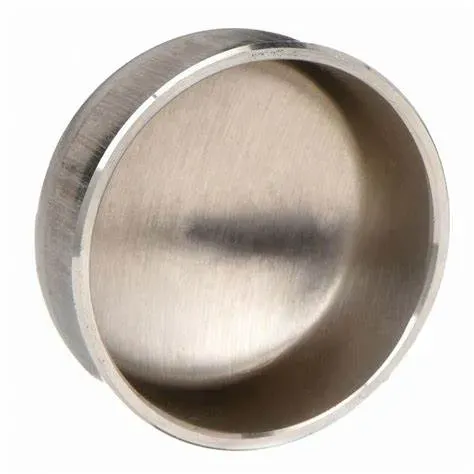-
Cangzhou Yulong Steel Co., Ltd.
-
Phone:
+86 13303177267 -
Email:
admin@ylsteelfittings.com
- English
- Arabic
- Italian
- Spanish
- Portuguese
- German
- kazakh
- Persian
- Greek
- French
- Russian
- Polish
- Thai
- Indonesian
- Vietnamese
- Zulu
- Korean
- Uzbek
- Hindi
- Serbian
- Malay
- Ukrainian
- Gujarati
- Haitian Creole
- hausa
- hawaiian
- Hebrew
- Miao
- Hungarian
- Icelandic
- igbo
- irish
- Japanese
- Javanese
- Kannada
- Khmer
- Rwandese
- Afrikaans
- Albanian
- Amharic
- Armenian
- Azerbaijani
- Basque
- Belarusian
- Bengali
- Bosnian
- Bulgarian
- Catalan
- Cebuano
- China
- China (Taiwan)
- Corsican
- Croatian
- Czech
- Danish
- Esperanto
- Estonian
- Finnish
- Frisian
- Galician
- Georgian
- Kurdish
- Kyrgyz
- Lao
- Latin
- Latvian
- Lithuanian
- Luxembourgish
- Macedonian
- Malgashi
- Malayalam
- Maltese
- Maori
- Marathi
- Mongolian
- Myanmar
- Nepali
- Norwegian
- Norwegian
- Occitan
- Pashto
- Dutch
- Punjabi
- Romanian
- Samoan
- Scottish Gaelic
- Sesotho
- Shona
- Sindhi
- Sinhala
- Slovak
- Slovenian
- Somali
- Sundanese
- Swahili
- Swedish
- Tagalog
- Tajik
- Tamil
- Tatar
- Telugu
- Turkish
- Turkmen
- Urdu
- Uighur
- Welsh
- Bantu
- Yiddish
- Yoruba

Sep . 19, 2024 16:14 Back to list
en1092 flange dimensions
Understanding EN 1092 Flange Dimensions
Flanges are essential components in various piping systems, serving as crucial intersections where two pipe ends or a pipe and a fitting meet. They provide connection points that ensure proper sealing and alignment within the system, making them vital for maintaining the efficiency and safety of fluid transport. Among the various standards that govern the dimensions and specifications of flanges, the EN 1092 standard is widely recognized in Europe.
Understanding EN 1092 Flange Dimensions
One of the critical aspects of EN 1092 flanges is their dimensions, which include the diameter, thickness, bolt hole spacing, and overall size. EN 1092 flanges are categorized by nominal pipe sizes ranging from varying diameters, typically designated in millimeters (mm). This classification allows users to select the appropriate flange size based on the specific requirements of their piping system.
en1092 flange dimensions

Moreover, the standard specifies various pressure classes, which denote the maximum pressure that these flanges can withstand at a given temperature. Common pressure ratings under EN 1092 include PN 2.5, PN 6, PN 10, PN 16, PN 25, PN 40, and PN 64, among others. Each class has specific dimension requirements that correlate with the pressure rating, ensuring that the flange can perform safely under anticipated conditions.
The dimensions of EN 1092 flanges are meticulously detailed in standardized tables, which include information on the outer diameter, bolt circle diameter, number of holes, and hole diameter. For instance, a PN 10 flange of a certain nominal diameter will have a specified outer diameter and a predetermined number of bolt holes, crucial for the fabrication of piping systems.
When selecting EN 1092 flanges, it is essential to consider not only the dimensions and ratings but also the materials used in their construction. Flanges can be made from various materials, including carbon steel, stainless steel, and alloys, each providing unique advantages concerning strength, corrosion resistance, and cost-effectiveness.
In conclusion, understanding the dimensions and specifications outlined in the EN 1092 standard is crucial for engineers and professionals involved in piping design and installation. Proper selection and application of EN 1092 flanges ensure safe, efficient, and lasting connections within piping systems, fostering the reliable transport of fluids across various industrial sectors. By adhering to these standards, organizations can ensure compatibility and operational safety in their fluid systems.
Latest news
-
ANSI 150P SS304 SO FLANGE
NewsFeb.14,2025
-
ASTM A333GR6 STEEL PIPE
NewsJan.20,2025
-
ANSI B16.5 WELDING NECK FLANGE
NewsJan.15,2026
-
ANSI B16.5 SLIP-ON FLANGE
NewsApr.19,2024
-
SABS 1123 FLANGE
NewsJan.15,2025
-
DIN86044 PLATE FLANGE
NewsApr.19,2024
-
DIN2527 BLIND FLANGE
NewsApr.12,2024
-
JIS B2311 Butt-Welding Fittings LR/SR 45°/90° /180°Seamless/Weld
NewsApr.23,2024











